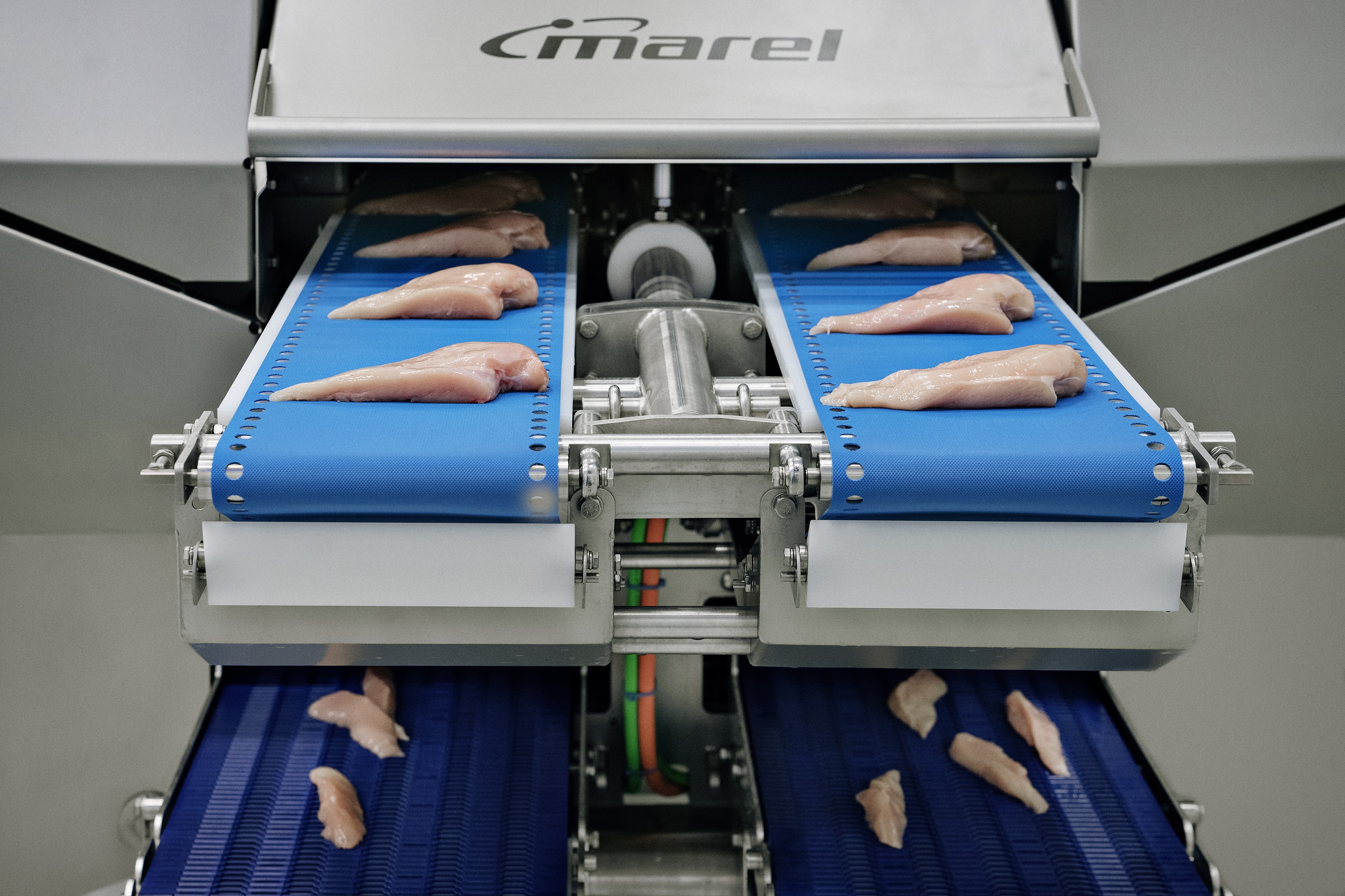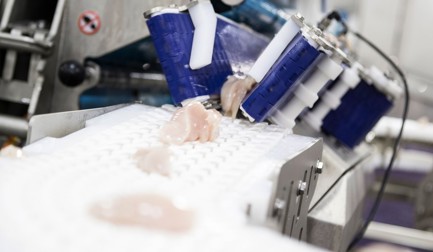Fillet, offcuts and trim
I-Cut 122 TrimSort can portion a fillet into a smaller fillet, useful cut-offs and trim, while sorting the cut items properly on two conveyor belts.
When a fillet enters the I-Cut with its ‘short edge leading’, a proper cutting angle can create a number of medallions, a smaller fillet and trim. The fillet continues on its way to retail packing by robot. Medallions and trim are accurately separated from the fillet and land safely on the separate lower internal conveyor belt, which takes them to another process.
Using a different fillet infeed and a different cutting angle, I-Cut 122 TrimSort will cut a fillet into a smaller fillet plus a number of strips, which together with trim will be diverted to the lower outfeed belt. The smaller fillet can be used in many QSR products such as a whole muscle meat burger. Portioned strips often end up as QSR whole muscle chicken wraps, chicken salads or ‘crispy tenders’.
Automated trim removal
When customers ask for chicken nuggets, strips or other small bites in QSR restaurants, these are easy to produce with the I-Cut 122 TrimSort. An inner fillet or half fillet is cut precisely several times and at high speed. The super-fast opening and closing belt does a reliably meticulous sorting job. It drops the tip, leaves perfect cubes on the upper belt and drops the tail too. Such a job needs no operators to separate quality products from trim, making the I-Cut 122 TrimSort a labor-saving solution.
I-Cut 122 TrimSort’s ability to cut and sort in so many different ways will handle the majority of portioned fillet products demanded by retail, QSR and catering customers.






